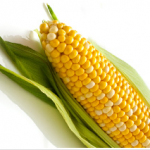By Dina Eliash Robinson
Fair disclosure: Some dozen years ago, spooked by too much information about our food supply, Lewis and I switched to buying and eating organic foods, grown locally or within the closest possible proximity. (The latter assured maximum freshness and nutritional content, as well as minimum energy use—i.e., carbon footprint—in transportation.) Still, skeptics to the bone, we remain vigilant in locating Certified Organic signs reading labels with attention to both content and omissions and grilling grocery store staff about their fresh produce. We have also learned to switch off all concerns about toxic agricultural  chemicals, hormones and genetically altered foods on the rare occasions we eat out, in order to enjoy our meals. Happily, now that more restaurants and dinner party hosts are serving organic foods, our “off” switch is getting less of a workout these days.
chemicals, hormones and genetically altered foods on the rare occasions we eat out, in order to enjoy our meals. Happily, now that more restaurants and dinner party hosts are serving organic foods, our “off” switch is getting less of a workout these days.
But since most consumers are either too busy or uninterested in learning more about the safety and nutritional value of their groceries, there is an urgent need for government mandated food labeling that requires the listing of all ingredients and known nutritional information on packaging, in clear, accurate and legible ways.
Unfortunately, the Environmental Protection Agency (EPA) and the Food and Drug Administration (FDA) seem to have taken a pass on their responsibility  to protect the public from toxic foods and our environment from the devastating effects of agricultural chemicals, factory farming and genetically engineered grains and other so called Frankenfoods. In fact, these agencies continue to stonewall all attempts by scientists and consumer groups to implement and enforce complete and accurate labeling that could, at least, enable people to make more health- and nutrition-savvy choices when shopping for food.
to protect the public from toxic foods and our environment from the devastating effects of agricultural chemicals, factory farming and genetically engineered grains and other so called Frankenfoods. In fact, these agencies continue to stonewall all attempts by scientists and consumer groups to implement and enforce complete and accurate labeling that could, at least, enable people to make more health- and nutrition-savvy choices when shopping for food.
Not surprisingly—and reminiscent of the tobacco companies’ long, costly but fortunately futile resistance to the mandated labeling of cigarette packages with health warnings—the chemical and bio-genetic grain producers such as Monsanto, Dupont and Dow have been fiercely resisting the disclosure of GMO (genetically modified organisms) and GE (genetically engineered) ingredients on food labels. They argue that listing them would cut into their sales by arousing consumers’ suspicion that there might be something wrong with such products. Proponents of accurate labeling—such as the Organic Consumers Association and other environmental and farming groups—are hoping that should, indeed, accurate labeling influence shoppers’ grocery buying patterns, this might provide an incentive for the industry to produce fewer processed and more wholesome and toxin-free foods. We can only hope…
In the meantime, the Union of Concerned Scientists, physicians at the American Academy of Environmental Medicine and others have been finding cause-effect connections between the consumption of genetically engineered foods and auto-immune disorders, liver and kidney damage, nutritional depletion, allergies, infertility, birth defects and even autism and premature aging in certain cases. This is not surprising, given the fact that 75-80 percent of all processed foods sold in the U.S., contain GMO products. According to the OCA, they are also present in “almost all non-organic foods containing soy or  canola oil, corn, sweeteners, artificial and natural flavorings…”
canola oil, corn, sweeteners, artificial and natural flavorings…”
Here are some of the more pressing health and environmental concerns that have emerged from various scientific studies in recent years—concerns that the EPA and FDA are strangely silent about:
• Monsanto’s engineered genes have been found in the bloodstream of pregnant women, their fetuses and many babies born in the U.S. Also reported as present in these studies by the journal of Reproductive Toxicology were such pesticides associated with GE foods as Bt toxin, glyphosate and gluphosinate.
• According to Salk Institute biologist Dr. David Schubert, children are at the greatest risk to be adversely affected by toxins and dietary problems caused by genetically modified foods. Since no one knows the long-term effects of the latter, kids are in effect the experimental “lab rats.”
• Enormous (and increasing) amounts of pesticides are required in the cultivation of GMO and GE crops. Among these chemicals are Monsanto’s RoundUp, a glyphosate considered to be more harmful than DDT; Dow’s Dioxin-tainted 2,4-D; Bayer’s Imidacloprid, which is implicated in the collapse of bee colonies, and others.
• These pesticides are known to deplete and pollute the soil and poison water sources.
• More than 50 countries around the world—including Japan, Russia, Hong Kong as well as China (including Hong Kong), South Korea, France and Australia—have either banned GMO and GE products altogether, or passed mandatory labeling laws.
Hope this information helps you make good choices when shopping for your groceries.


One Comment on “Who’s Afraid Of Food Labels?”
Food prices have risen faster in recent years than ever before. As many of us are feeling the pinch, it is time to reevaluate some of our food purchases. The term “organic” has been thrown around in the shopping aisles like sprinkles on the jelly donut you’re trying to avoid. It seems like hundreds of new “organic” products have emerged, all with a price tag about 30% higher than the regular option. Is it really worth the extra money, or are we all being duped with a clever marketing campaign to get us to buy essentially the same thing for a lot more?